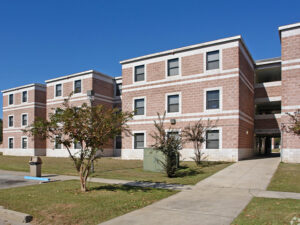
Lack of housing has been an ongoing issue for Florida A&M University, and it hasn’t put the
institution in the best light. However, a two-year plan to remedy the situation is underway was
updated at the Oct. 6 Board of Trustees meeting.
The demand for housing began with an increase in freshmen enrollment and transfer students,
leaving almost 600 students with no place to live on campus. According to news.wfsu.org, the
number of incoming freshman applying to the university went up by 45%, and the number of
transfer students went up by 51%.
High inflation also plays a role in this increased demand as it has made off-campus housing an
expensive option for students, thus making on-campus housing more desirable.
The two-year plan is part of the university’s master plan that includes proposed construction
projects that involve classrooms, residence halls and other facilities on campus. The plan itself
includes the demolition of Palmetto North, which is currently underway, as well as the request
to demolish Gibbs Hall, Palmetto South and Phase III Apartments, which do not have a
definitive date.
The demolished buildings would then be replaced with new housing that would allow for a total
of 1,013 new beds to be available to FAMU students.
According to Jennifer Wilder, director of student housing, FAMU students can expect the newly
built housing to be modern style with amenities that will be of use to students.
“Currently we are looking to add more hotel, suite and apartment-style rooms versus
traditional corridor rooms with community baths,” Wilder said. “Our vision for our apartment-
style buildings is an enclosed building with a central entrance versus the open hallways at
Palmetto South and Phase III. We look to continue to provide meeting and gathering spaces as
well as community kitchens in each hall.”
The replacement living facilities could also include updated technology, living-learning spaces
and multipurpose use facilities. Wilder said she feels students will benefit from the plan, and
the university will as well.
“This plan will provide our students with some of the amenities they desire in a residence hall
and make our halls more attractive and competitive with our peer institutions,” Wilder said.
“We hope students will have fond memories of the time they spent in the buildings scheduled
to be demolished and be excited as they move into the new replacement facilities.”
Similarly, William E. Hudson Jr., vice president of student affairs, believes that both the
students and the university have a lot to gain from the plan.
“The proposals will provide students with state-of-the-art facilities, increase the number of
available residence hall beds for students and provide living-learning communities to increase
student retention, persistence and graduation rates,” Hudson said.
Students will not be negatively impacted by the demolition of these buildings, as they will not
take place until new facilities are built. The two-year proposal is to construct new facilities in
vacant spaces, such as Paddyfoote and other vacant lots by FAMU Towers, while it begins
discussion on options available, including the demolitions.
Although the demolition of Gibbs Hall, Palmetto South and Phase III have not been approved as
of now, the university has continued to move forward with fixing the housing issue after just
recently purchasing the Lighthouse at Brooklyn Yard from Summit Properties. That allows for an
additional 118 beds to be available to FAMU students.
The proposal will continue to be presented at future Board of Trustees meetings as the
demolitions await approval.